PhD Students
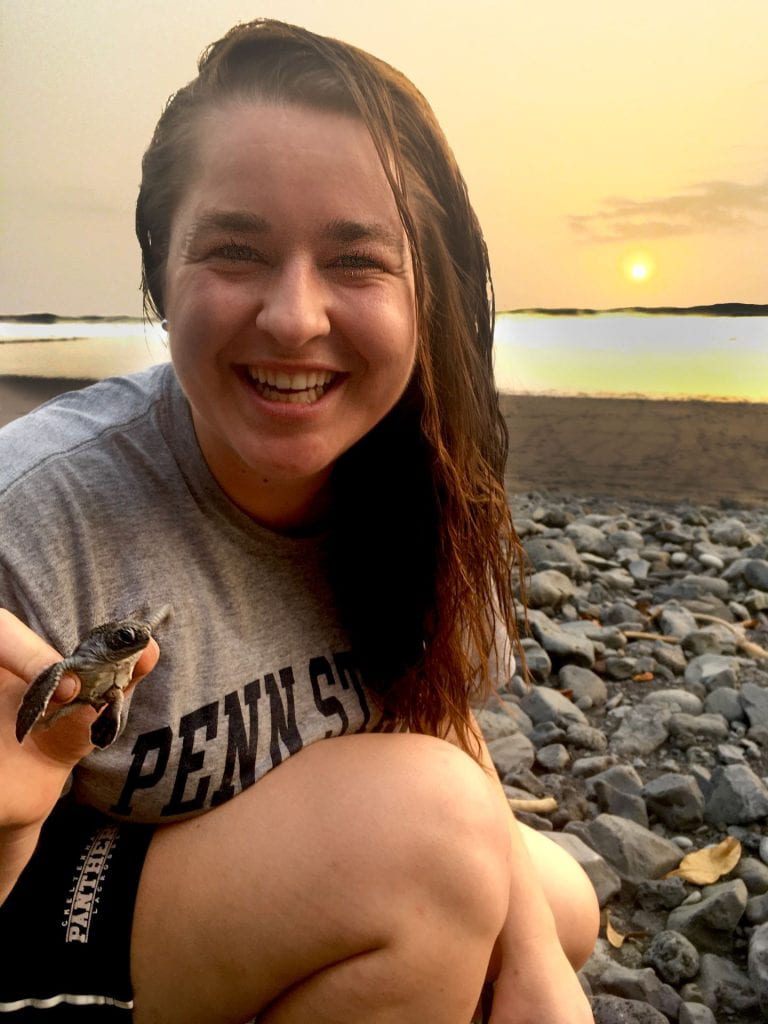
Madison Wilken
Co-advised by Ryan Paitz
Maddie joined the lab in Summer 2023. After getting her BS from UMass Amherst, she took a couple years off, during which she spent some time working with sea turtles in Equatorial Guinea. She is excited to work with freshwater turtles here in Illinois. She is currently developing her project so check back for updates!

Clinton Warren
Co-advised by Ryan Paitz
Clinton joined the lab in Summer 2022 after completing his MS at Middle Tennessee University.
Development in oviparous animals is often highly contingent upon the environmental conditions they experience and their sensitivity at the time those conditions occur. One of my primary research interests therefore involves exploring how the temporal responsiveness of molecular events and stress-responses shape developmental processes and outcomes in ectotherms experiencing naturalistic, transient temperatures. In addition, I ask how these responses to temperature interact with the developmental endocrine environment and how variation within populations might influence long-term thermal adaptation. Currently, I am exploring the thermal responsiveness of genes tied to gonadal sex determination and heat-shock responses in red-eared slider turtle embryos. The thermal responses of such genes may vary not only in strength anddirectionality, but also in timing and duration, and it is these temporal components of response that will be the focus of my PhD work.
Lab Alumni
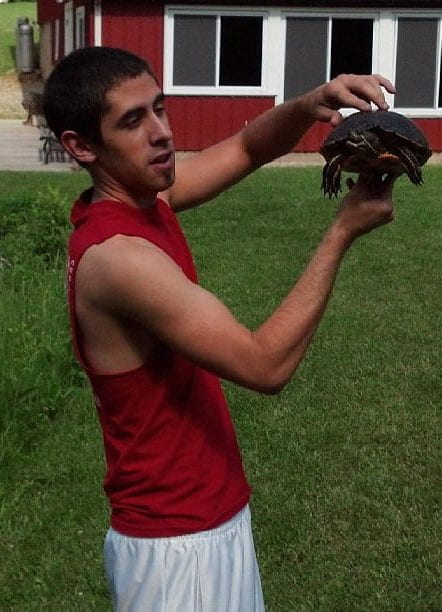
Tony Breitenbach (PhD 2022)
Current Position: Lecturer, Indiana University – East
Co-advised by Ryan Paitz
Tony joined the lab in Fall 2016, coming to ISU from Indiana University – East. Tony’s project examines how turtles with temperature-dependent sex determination are affected by environmental variation. Tony’s work has appeared in Proceedings of the Royal Society, Journal of Experimental Biology, and Integrative and Comparative Biology.
Rosario Marroquin-Flores (PhD 2022)
Current Position: Post-doc, Texas Tech University
Co-advised by Ryan Paitz
Rosario joined the lab in Fall 2017, having completed her undergraduate degree at the University of New Mexico. She is investigating the molecular underpinnings of temperature-dependent sex determination. Rosario has publications in Biology Letters and Journal of Experimental Biology., and currently a postdoc at Texas Tech University.
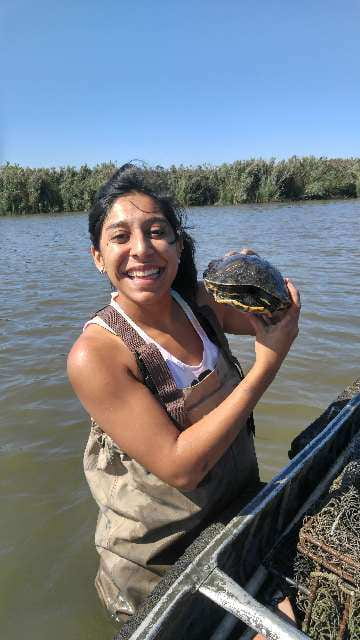
Nicole Campbell (MS 2019)

Co-advised by Ryan Paitz
Nicole completed her undergraduate degree in 2016 and joined the lab in Fall 2017 after transferring from another MS program at ISU. Nicole’s project focused on the effect of steroid hormones on embryonic development in the European starling.
Amanda Wilson Carter (PhD 2018)
Current Position: Assistant Professor, University of Northern Arizona
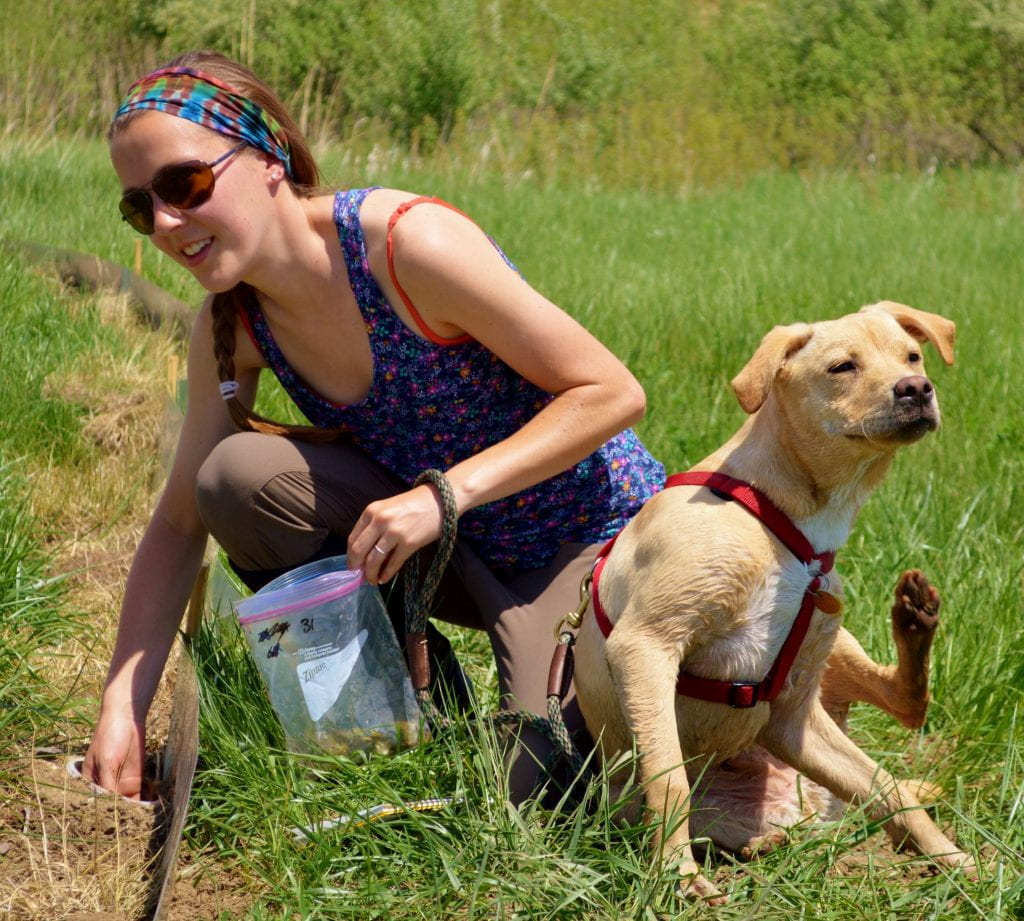
Overwhelming evidence demonstrates that organisms have already been affected by recent climate change; however, the current rate of environmental change may outpace the rate at which many species can respond. By understanding the range of phenotypic plasticity organisms employ under current environmental variation, we may be able to better predict the extent to which phenotypic plasticity may help organisms cope with climate change. This is particularly important for thermally sensitive species like reptiles with temperature-dependent sex determination (TSD), including the red-eared slider turtle (Trachemys scripta). Previous work has shown that incubation temperatures and estrogens act synergistically to produce females, with less estrogen needed for feminization as temperatures increase towards the pivotal temperature (Tpiv) where a 1:1 sex ratio is produced. We also know that levels of maternally derived yolk estrogens are higher in late season clutches relative to early season clutches. My dissertation research seeks to understand how seasonal and geographic variation in yolk hormones may modify the Tpiv and hatchling phenotype. In addition to sex, my research explores other phenotypic characteristics of hatchlings, like behavioral syndromes, that may be important for hatchling survival. Through my dissertation research, I aim to further our understanding of how TSD operates under natural conditions to better inform conservation efforts of reptile species with TSD.
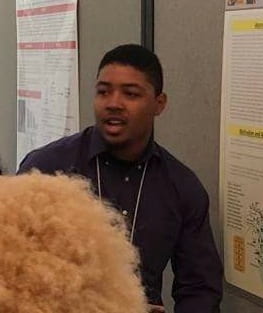
Marc Ashford (MS 2018)
Co-advised by Dr. Laura Vogel
Marc joined the lab in Fall 2016, having received his BS from ISU in Spring 2016. Marc’s project focused on the development of gut immunity in turtles as well as trying to better understand the functionality of phagocytic B cells. Marc’s work was published in the Journal of Experimental Zoology.

Justin Dillard (MS 2017)
Current Position: Illinois Department of Natural Resources
Justin joined the lab in Fall 2014, coming to ISU from Eureka College. Justin examined how exposure to the endocrine disruptor bisphenol-a (BPA) during development affected learning in red-eared slider turtles. The results of his project are published in Physiology & Behavior, and he is currently working for the Illinois Department of Natural Resources.
Ryan Paitz (PhD 2010, Post-doc 2010-2013, 2014-2017)
Current Position: Assistant Professor, Illinois State University
e-mail: rpaitz@ilstu.edu
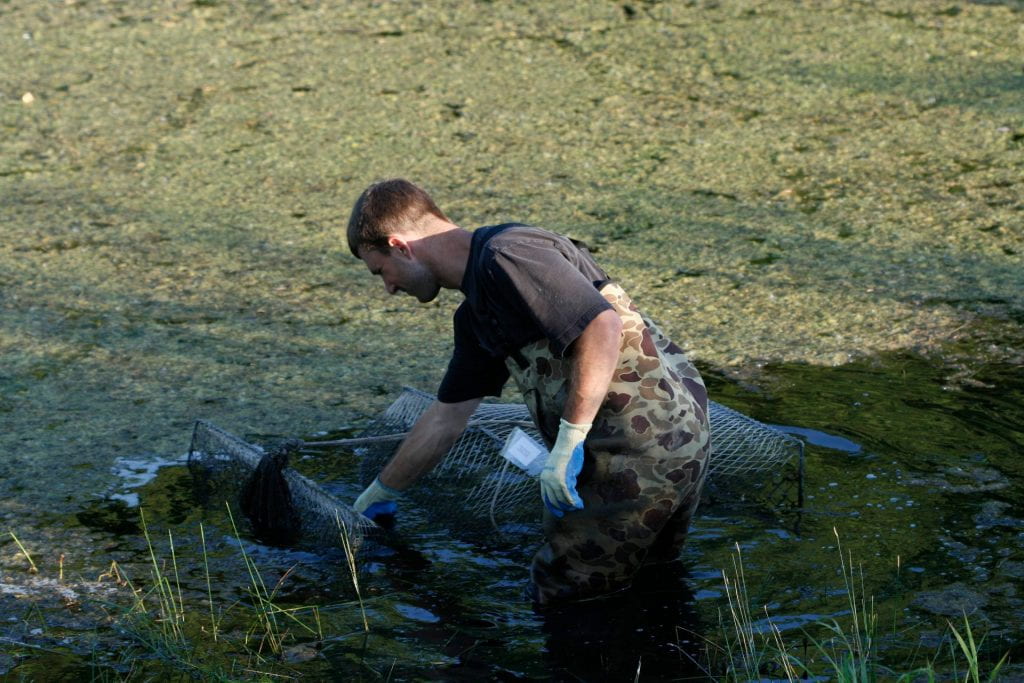
Deciphering the physiological mechanisms that underlie yolk steroid effectsIt is well established that perinatal steroids play a critical role in directing differentiation during embryonic development in vertebrates. Because of this, it has been proposed that females may be able to influence offspring development by modifying the embryonic endocrine environment. Numerous studies have demonstrated that manipulating the maternal endocrine environment can have long term effects on the developing offspring but the mechanisms by which maternal endocrine signals influence offspring are not very well understood. My research focuses on the mechanisms that underlie how maternally derived yolk steroids influence the developing offspring in oviparous vertebrates. Specifically, I will be addressing two mechanistic questions: 1. How do lipophilic steroids make it from the lipid rich yolk to the aqueous embryonic environment? 2. How do steroids, present at the time of oviposition, influence some offspring traits while not influencing other traits known to be regulated by steroids? Current experiments are examining the role of sulfotransferase activity in deactivating yolk steroids and the role sulfatase activity in potentially reactivating these steroids later in development. This sulfotranferase-sulfatase pathway may potentially provide a mechanism to answer both of the research questions.
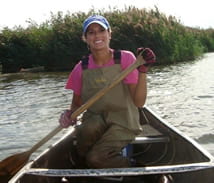
Sarah Marrochello (MS 2016)
Co-advised by Dr. Laura Vogel
Sarah is investigating the role of phagocytosis and antibody production in B cells, with a focus on the effects of temperature on B cell function, as well as seasonal variation in mucosal immunity.
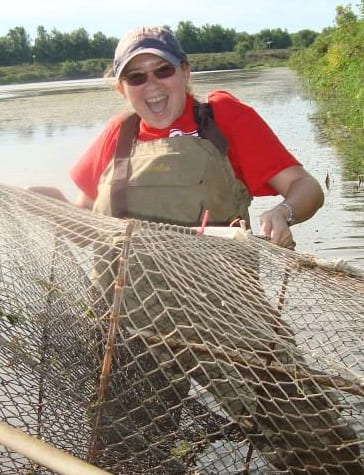
Lisa Treidel (MS 2015)
Lisa joined the lab in Fall 2012 after completing her BS in Biology at Bucknell University. Her project focuses on the effects of the developmental environment on oxidative stress. Lisa has given several presentations at local and national meetings and has recently published some of her undergraduate research on birds. Lisa her PhD at the University of California – Berkeley and is currently a post-doc at the University of Nebraska – Lincoln.
Becca Cohler (BS 2015)
Becca has been working with Amanda to characterize offspring behaviors.
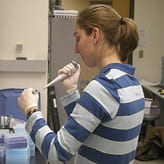
Laura Zimmerman (MS 2009, PhD 2013)
Co-advised by Dr. Laura Vogel
Reptiles hold an important place in evolutionary history, providing the key link between the ectothermic fishes and amphibians, and the endothermic birds and mammals, and thus a greater understanding of the reptile immune system could provide important insights into the evolutionary history of immune responses. Previous research has shown that aspects of these responses exhibit seasonal variation that is species specific. One goal of my study is to examine the effects of season on immune responses in adult red-eared sliders. A second goal of my research is to examine how estrogens affect the immune response of female turtles. Estrogens are generally considered to be immunostimultory, and are known to vary seasonally. As part of my thesis work, I will experimentally manipulate estrogen levels and I hypothesize that increasing estrogen levels will result in an increased immune response. I am using a variety of immune measures to look at innate, cell-mediated, and humoral immunity. Laura is on the Biology faculty at Millikin University.
Piers Hunter (High School student)
Piers first joined the lab in 2012 as a ISU Summer Research Academy participant and then returned as a field and laboratory assistant in 2013 and 2014. Piers is currently pursing his undergraduate degree in biology.
Sandrine Clairardin (MS 2012)

The main goal of my research is to understand the mechanisms underlying endocrine disruption. Research on the endpoint effects of EDCs has primarily followed one of two paths, either testing single compounds or testing multiple compounds. While it has been argued that testing single compounds does not provide information on the likely complex effects of mixture, it should simplify the interpretation of any effects. As such, I will focus on one very commonly used chemical, BPA, attempting to tease apart the mechanism of action by approaching the problem from various angles within one model system. Using embryonic and hatchling red-eared slider turtles, I am investigating two types of exposure impacts, 1) the estrogenic and toxic effects on the phenotype and survival of the individual and 2) the response of the body to BPA exposure such as up-regulation of genes and proteins that target the metabolism and elimination of BPA. If the mechanism(s) of action can be determined for this chemical, it may lead the way for research of mechanisms of other EDCs, especially those eliciting similar estrogenic effects. Additionally, understanding of the mechanism(s) of action for this and other EDCs may allow for more effective treatment of disorders that are thought to be caused by the actions of these chemicals for both human and non-human animals. As more and more synthetic chemicals with unknown effects are formulated each year, understanding the mechanisms of action becomes increasingly critical for ensuring the health and longevity of all organisms and the environment. Sandrine is lead author on a paper in Proceedings of the Royal Societyand is a co-author on several additional publications.
Patrick Wagner (BS 2012)
Pat worked on a project to determine the fate of corticosterone during embryonic development in the red-eared slider.
Justin Hicke (MS 2012)
“Predator recognition and behavioral responses in the red-eared slider turtle, Trachemys scripta elegans”
Kristin Duffield (BS 2012)
Kristin assisted with a project examining the fate of estrogens during embryonic development. She is now a PhD student at ISU studying in the labs of Dr. Scott Sakaluk and Dr. Ben Sadd.
Ashley Sawa (BS 2012)
Ashley participated in a project that characterized the movement of estrogens during embryonic development, and is a co-author on a paper in General and Comparative Endocrinology. Ashley is currently in veterinary school.
Katie LaMagdeleine (BS 2012)
Katie assisted with determination of the ratio of heterophils:lymphocytes from blood smears collected from red-eared slider turtles. Katie is a co-author on a paper in the Journal of Experimental Biology.
Thomas Dent (BS 2012)
Thomas worked on characterizing the behavior of red-eared slider turtle hatchlings when exposed to a predator stimulus.

Mikael Holgersson (MS 2009)
Since the early 1970’s, turtles have been recognized as natural carriers of Salmonella and consequently as excellent vectors of human salmonellosis. The FDA federally banned the sale of turtles with shell lengths less than 4 inches in 1975 after many turtle owners, particularly children, contracted Salmonella from their pets as a result of poor hygiene practices and general ignorance.The human health hazard posed by turtles has driven a large body of research since that time, but few studies have examined the natural interaction of Salmonella and their turtle hosts. I am directing my efforts to help fill this gap and am currently working on a multipart project to 1) assess Salmonella prevalence in a turtle community near the Illinois River, 2) determine how developing red-eared slider turtles contract Salmonella, and 3) determine if Salmonella infections result in measurable costs to developing red-eared slider turtles. I am using selective plating techniques and thereafter ELISA and/or PCR to detect and identify the Salmonella organism. Mik is lead author on a manuscript in Journal of Experimental Zoology Part A.
Amelia Gould (BS 2009)
Amelia worked on several projects during her time in the lab including the effects of incubation temperature on hatchling morphology and whether nesting produces a measurable stress response in female turtles. She is a co-author on a manuscript in the Journal of Experimental Zoology Part B and a paper in Journal of Herpetology. Amelia is currently in veterinary school.
Adam Griffin (BS 2009)
Adam assisted with a project on the effects of temperature fluctuations on offspring phenotype. He is a co-author on a manuscript in the Canadian Journal of Zoology.
Kemi Onajin (Illinois Wesleyan University)
Kemi studied how the conditions experienced during incubation influence digit lengths in hatchling turtles.
Heidi Harms (MS 2007)
“Characterization of immune parameters during development and adulthood in the red-eared slider turtle (Trachemys scripta elegans)”
Heather Les (BS 2007)
Heather worked in the lab for 2.5 years and is a co-author on publications and presentations relating to the effects of the incubation environment on hatchling phenotype. Her manuscripts are published in the Journal of Experimental Zoology Part A, and Physiological and Biochemical Zoology.
Lauren Kozlowski/Smithee (BS 2005)
Lauren worked in the lab for 2 years and co-authored several presentations, and is a co-author on a manuscript in Physiological and Biochemical Zoology.